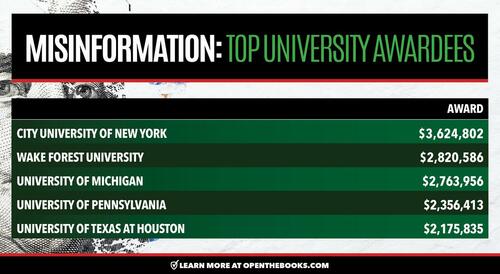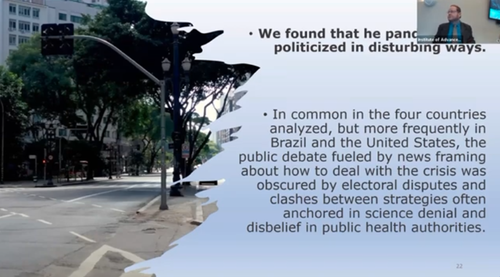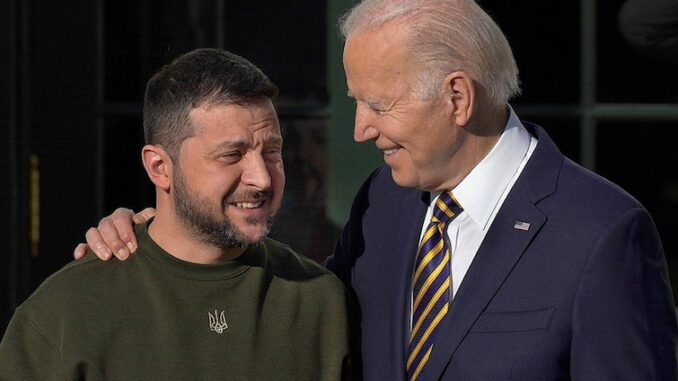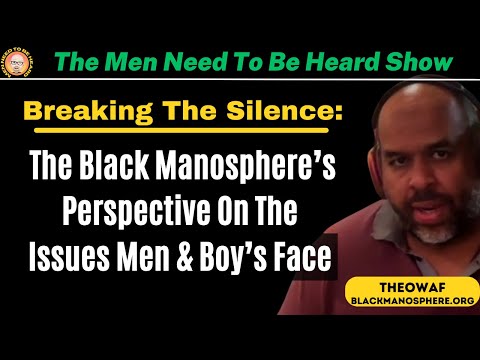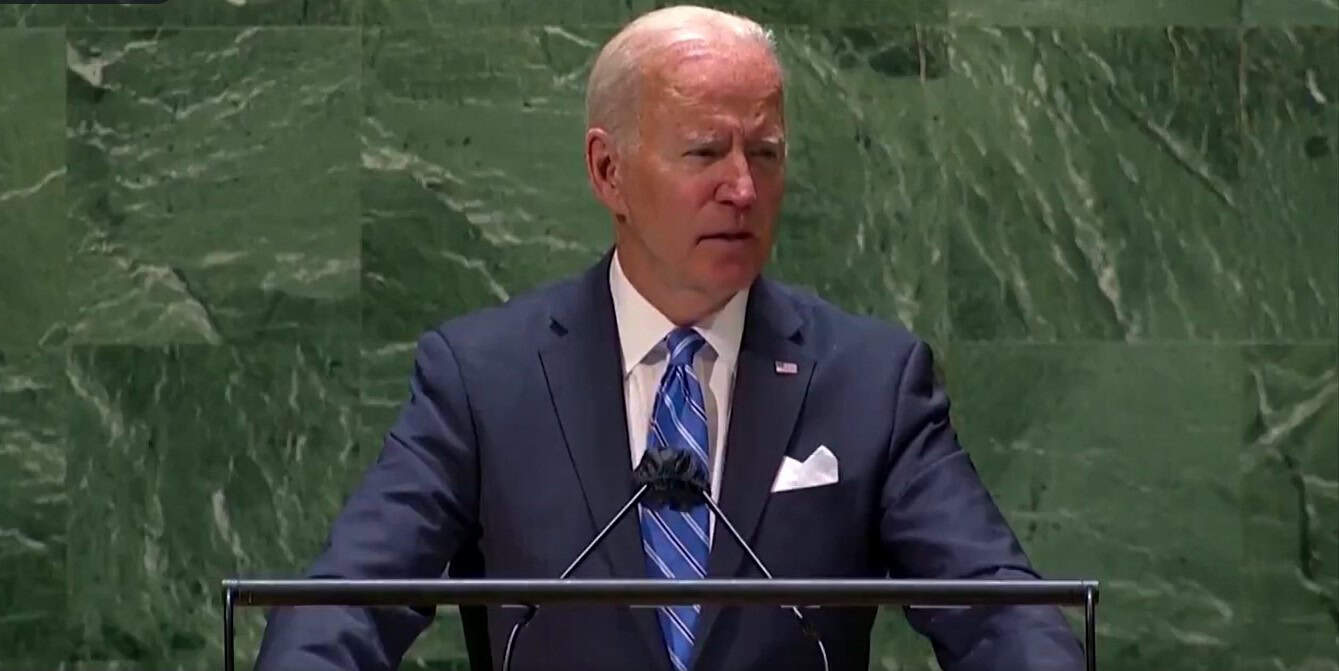Navy’s Indo-Pacific Commander Warns Ukraine Aid Is Draining US Missile Stocks
Navy’s Indo-Pacific Commander Warns Ukraine Aid Is Draining US Missile Stocks
A top US Navy admiral has warned this week that the recent move of Washington to give advanced long-range weapons to Ukraine is depleting US missile stocks.
Adm. Sam Paparo, Commander of US Indo-Pacific Command, told a Brookings Institution audience earlier this week that earlier in the war the US was shipping less valuable weaponry to Ukraine, which didn’t deeply impact readiness for big global threats like China. More advanced defense tech is currently being shipped, and this presents a serious problem for the United States’ long-term defense needs.
“But now with some of the Patriots that have been employed, some of the air-to-air missiles that have been employed, it’s now eating into stocks,” Paparo said.
“And to say otherwise would be dishonest,” the naval commander continued. Given he’s in charge of the Pacific region, he underscored that this could weaken America’s defense posture in the region for the long term, at a moment Beijing is vying for military primacy.
Paparo emphasized that “none” of these weapons “are preserved for any particular theater, but none can move with alacrity to any theater.”
“Inherently, it imposes costs on the readiness of America to respond in the Indo-Pacific region, which is the most stressing theater for the quantity and quality of munitions because the [China] is the most capable potential adversary in the world,” he continued, as cited in Washington Times report Friday.
He called for the depleted weaponry to be restored “and then some” – and that this must be an urgent priority.
Among the missile systems being given by the Biden administration to Kiev are Patriot air defense batteries, and the Army’s ATACMS.
European countries have also suffered the same problem of depleted domestic stockpiles. Ukraine’s Western backers are at the same time trying to assist Kiev in jump-starting and expanding its own defense manufacturing sector.
Tyler Durden
Sun, 11/24/2024 – 07:35
Taxpayer Funded Censorship: How Government Is Using Your Tax Dollars To Silence Your Voice
Taxpayer Funded Censorship: How Government Is Using Your Tax Dollars To Silence Your Voice
Submitted by Open the Books
Campaign season brought with it a steady stream of accusations that various parties and platforms were spreading misinformation and disinformation.
Most recently, the scandals at FEMA over avoiding homes with Trump signs was quickly slapped with a “misinformation” label…until FEMA itself admitted it had happened. MSNBC anchor Jen Psaki suggested “laws have to change” to combat the scourge.
With the misinformation category being weaponized across the political spectrum, we took a look at how invested government has become in studying and “combatting” it using your tax dollars. That research can provide the intellectual ammunition to censor people online.
Since 2021, the Biden-Harris administration has spent $267 million on research grants with the term “misinformation” in the proposal.
Of course, the Covid pandemic was the driving force behind so much of the misinformation debate. Sure enough, the feds have spent at least $127 million in grants specifically targeted to study the spread of “misinformation” — or to help people “overcome” it, so to speak — by persuading them to go along with Covid-related public health recommendations and mandates.
In one particularly brazen instance, $200,000 was spent slandering President-elect Trump himself. The grant resulted in a paper suggesting populist leaders and movements in various countries kept people from coming together in “solidarity” and public officials need to have the “main say” on health guidance next time.
In other words, it would be better if your voice were silenced in favor of the “expert” class.
BACKGROUND
The COVID-19 pandemic instigated a rush of funding for research and projects addressing misinformation. At the time bureaucrats like Anthony Fauci contended that false information spread online undermined scientific recommendations coming from the government. Many of those government recommendations—vaccines for children, masking and double masking, and six feet for social distancing—have since been found to have dubious scientific basis.
The federal government used both carrots and sticks, in the form of grants and censorious pressure campaigns, in the name of combating COVID misinformation. At the same time, it was working hand in glove with social media companies to silence critics of repressive COVID-19 policies.
There is robust documentation by now proving that the Biden-Harris administration worked closely with social media companies to censor content deemed “misinformation,” which often included cases where people simply questioned or disagreed with the Administration’s COVID policies.
Earlier this year the Supreme Court ruled that such activities did not violate the First Amendment, but Meta CEO Mark Zuckerberg admitted such pressure was “wrong;” Tesla CEO Elon Musk purchased Twitter (now X) in part because of the company’s extreme restrictions on speech during COVID.
In February the U.S. House Committee on the Judiciary and the Select Subcommittee on the Weaponization of the Federal Government issued a scathing report against the National Science Foundation (NSF) for funding grants supporting tools and processes that censor online speech.
The report said, “the purpose of these taxpayer-funded projects is to develop artificial intelligence (AI)-powered censorship and propaganda tools that can be used by governments and Big Tech to shape public opinion by restricting certain viewpoints or promoting others.” $13 million was spent on the censorious technologies profiled in the report.
While the NSF was singled out for particularly egregious ideology-driven behavior, the full universe of misinformation-related spending in the federal government is much larger and goes far beyond colluding with the tech sector to restrict opinions online.
Federal spending records show at least $127 million tax dollars funding anti-misinformation efforts directly related to COVID-19 for a variety of activities, from on-the-ground advocacy working to dispel vaccine misinformation, to scientific studies on how supposed misinformation is spread online.
The result of all this was a record loss of trust in science and government and compounding economic and social disasters that may never be able to be fully quantified.
Learning to think critically and discern truth from lies is an important life skill, but the federal government has proven it is not capable of addressing that need responsibly. It’s the worst possible arbiter of truth, as it were, because it makes the state a gatekeeper of speech.
BY THE NUMBERS
Misinformation-related grants actually stretch back to FY2017 during the first Trump presidency. $273 million has been awarded for grant proposals containing the term since then—but there was an explosion of cash during the years-long Covid malaise. The vast majority of that figure ($267 million) was for grants that began in 2021 or later.
METHODOLOGY NOTE: This likely does not cover all grants given to combat misinformation, because transaction descriptions may not include this keyword, but the trend in spending illustrates a sudden explosion of interest in misinformation starting in 2021.
An enormous year-over-year jump in new grants occurred between 2020 and 2021—from $2.2 million to $126 million as the federal government poured money out to address COVID-related “misinformation,” among other projects.
While spending has since slowed down, it is still far higher than it was pre-pandemic in 2020: $18.3 million in new grants began in FY 2024.
Grants mostly came from the Department of Health and Human Services ($185 million), followed by the National Science Foundation ($65 million), with the Department of State ($12 million) in a distant third. CHART: Click here for a breakdown of misinformation spending by agency.
An additional $17 million has awarded to misinformation-related contracts since 2020, and again, most of it ($12.5 million) was in FY 2021.
WHAT IS MISINFORMATION, ANYWAY?
According to the Department of Health and Human Services website:
“Misinformation is information that is false, inaccurate, or misleading according to the best available evidence at the time.”
The website goes on to detail supposed issues with COVID-19 related misinformation:
“During the pandemic, health misinformation has led people to decline vaccines, reject public health measures, and use unproven treatments. Health misinformation has also led to harassment and violence against health workers, airline staff, and other frontline workers tasked with communicating evolving public health measures.”
These definitions leave a lot of room for interpretation and abuse—who decides what the “best available evidence” is at any given time? And who decides which experts should be considered authoritative or not?
Famously, then-National Institute of Allergies and Infectious Disease director Anthony Fauci promoted the notion that people should stand six feet apart from each other to achieve “social distancing” to reduce COVID transmission.
In January of 2024 Fauci would admit to Congress that this recommendation had no scientific basis and “sort of just appeared.”
The six feet social distancing rule was used to justify extended school and business closures, wreaking economic havoc and leading to tremendous learning losses for children.
BACK TO THE START: MISINFO SPENDING UNDER TRUMP
Before most of the furor, the Trump administration granted about $6.7 million in funding related to misinformation, the bulk of which were awarded in FY 2019 and 2020. Most of these grants—12 of the 16 total—funded technological developments to monitor social media and flag misinformation.
The earliest one of these was awarded in 2017: $316,000 from National Science Foundation for “training computers and humans to detect misinformation by combining computational and theoretical analysis.”
No such grants were given out domestically in 2018, but in 2019 over $2 million were awarded for projects with titles like “Online Dynamics of Misinformation” and “Social Media and Mass Communication: Curriculum Development to Combat Misinformation.”
Spending stayed about the same at $1.7 million in FY 2020 for six projects, including two that directly address COVID:
-
$149,858 from National Science Foundation for “tracking and network analysis of the spread of misinformation regarding COVID-19.”
-
$104,491 from National Science Foundation for “countering COVID-19 misinformation via situation-aware visually informed treatment.”
While this spending is a drop in the bucket for what was to come, the censorious ideology behind “misinformation” grants which were abused during the Biden-Harris administration first got traction under Trump.
NEXT STEPS: CASH TO FIGHT COVID MISINFO
When examining the number of projects on misinformation, most did not specifically relate to the COVID-19 pandemic. Many involved misinformation concerning HIV, the HPV vaccine, or the opioid epidemic, for instance. Multiple projects also addressed more obscure topics, like this $234,401 grant to “combat misinformation that negatively impacts public perception of crabbing and the commercial fishing industry.”
But dollar for dollar, $127 million was directly related to COVID.
Projects receiving funding generally comprised two categories:
-
Public-interfacing programs meant to mitigate the supposed impact of misinformation through on-the-ground advocacy
-
Scientific studies or conferences on how misinformation is spread
ON-THE-GROUND ADVOCACY
The federal government pumped millions of dollars into on-the-ground campaigns to “dispel” misinformation and convince people to take COVID-19 vaccines or otherwise comply with COVID policies. Some examples include:
-
$80,092,486, Department of Health and Human Services, National Foundation for the Centers for Disease Control & Prevention, to build a network of nonprofits through which to disperse materials about COVID and flu vaccines. Project goals include “the design, development, and management of a searchable repository platform to house a multi-lingual inventory of communication materials and tools to support collaborative efforts to increase adult immunization.”
-
$2,000,000, Department of Health and Human Services, Durham County, NC. Proposed activities include “a mass media campaign, SMS distribution of health messaging, out-of-home advertising within targeted geofencing, coordinating existing networks of community health workers, expanding peer advocacy programs to address vaccine hesitancy, outreach to address health-related misinformation, mini-grants for native content development with accurate health messages, and a digital learning community to advance organizational health literacy.”
-
$1,293,614, Department of Health and Human Services, University of Iowa. To leverage trusted community members to address “disparities in COVID testing and vaccine uptake.”
Other grants were revised to add an anti-misinformation component. For example, $150,000 was added to a $1.2 million grant from the Corporation for National and Community Service (also known as AmeriCorps) to nonprofit Seeds 4 Success.
The original grant was to connect “foster grandparents” to children to serve as tutors and mentors. The revision stated the foster grandparent program will instead “dispel misinformation about COVID vaccination and help [the target community] see the benefits, especially vaccinating children when eligible, and help maximize contract tracing resources to ensure safety of the families we serve.”
MISINFORMATION STUDIES
Other funding went to researchers seeking to understand how supposed misinformation is shared online and how it can be combatted or mitigated using social or technological tools. Universities were often the recipient of such research spending.
Although much of this research is academic, it is often intended to lay the groundwork for public interventions.
Examples include:
-
$2,356,413, Department of Health and Human Services, University of Pennsylvania, for “investigating and identifying the heterogeneity in COVID-19 misinformation exposure on social media among black and rural communities to inform precision public health messaging” because “misinformation contributes to confusion, distrust, and distress around health behaviors such as vaccination, mask wearing, and social distancing.” In other words, they wanted to find the different messages and media various communities were receiving in order to tailor the government’s rebuttal.
-
$2,175,835, Department of Health and Human Services, University of Texas Health Science Center at Houston, for research on the “social processes and cognitive factors underlying misinformation comprehension” in social media. By developing an algorithm to automatically detect “intent and belief attributes underlying COVID-19 misinformation” researchers can develop computational infrastructure to mitigate the spread of that misinformation “easing public health burden and informing policy regulations as needed.”
-
$348,310, Department of Health and Human Services, Michigan State University, “to counteract the negative impact of misinformation on digital platforms that threatens public health.” The overall goal of the project is “to develop a publicly accessible vaccine informatics system to track vaccine debate, and to test the impact of vaccine debate… during the onset of a global pandemic.”
OTHER GRANT EXAMPLES
$200,000 to Slander a Political Opponent
One notable research grant awarded to George Washington University in FY 2022 targeted former president Donald Trump. The study, called “Pandemic Communication in Time of Populism: Building Resilient Media and Ensuring Effective Pandemic Communication in Divided Societies” received a $199,516 grant from the National Science Foundation.
Researchers on this Biden-era grant examined how so-called “populist” leaders supposedly prevented society from coming together in “solidarity” during the COVID pandemic. Trump’s presidency was a focus of the research, along with the leaders of three other countries.
One researcher said in a video interview:
“What went wrong in different ways in all these countries and in a lot of countries around the world that had populist governments…there was just this very high level of polarization and politicization of the pandemic response…and it really interfered with the ability of society to pull together in a consistent way and to get through the pandemic.”
The research also concluded that “experts” should have the “main say” during the next public health crisis, with another investigator saying:
“One of the recommendations stemming from our strand is related to who is in charge of disseminating information related to the public health crisis, in our view based on the data that we have, it’s obvious that governments should allow the experts to have the main say in how society should respond to public health crisis.”
At the end of the video “climate change” is the next crisis these experts suggest requires strong public solidarity that populist leaders are incapable of creating.
WILL THE NATIONAL ACADEMIES THEMSELVES SPREAD MISINFORMATION?
In a similar vein, $994,950 was awarded from the National Science Foundation to the National Academies of Science on “Understanding and Addressing Misinformation about Science.” This report was needed because, according to the grant description, “concern about the spread of misinformation and its role in undermining scientific expertise and facts in civic dialogue has grown significantly, especially over the last 5-10 years.”
The report has yet to be published, but there is reason to suspect it will also lack introspection from its supposed expert panel of researchers.
The chair of the research committee, Kasisomayajula Viswanath also worked on the report “Communication Strategies for Building October Confidence in COVID-19 Vaccines: Addressing 2021 Variants and Childhood Vaccinations.”
Viswanath said at the time to “continue to emphasize [to parents] how safe the vaccines are and how they are effective in preventing serious disease. More than 6 billion doses of vaccines have been given globally so far with very few serious adverse effects.”
But as the New York Times reported in February 2024, many other countries no longer recommend or even offer COVID-19 vaccinations or boosters for children.
The New York Times article suggested that U.S. Center for Disease Control’s recommendation for childhood vaccination diminishes the agency’s credibility, because, as other countries have concluded, the benefits of childhood COVID vaccines do not outweigh the costs.
It remains to be seen if this misstep in COVID policy will be a part of the new $1 million report on how misinformation erodes public faith in “scientific expertise.”
MISINFORMATION CONTRACT SPENDING
As we’ve illustrated, public grants focused on “dispelling” misinformation with supposedly accurate information in order to coerce people into compliance with health policy directives.
But beginning in 2020, contracts were often concerned with monitoring or eliminating supposed misinformation at its source.
Because contract descriptions are frequently vague, it is unclear how many are directly related to COVID-19. Only one explicitly mentioned the pandemic in its contract transaction description.
Examples of these misinformation contracts include:
- $300,000, Department of Health and Human Services, Innov8AI, “capturing medical misinformation in social media for targeted interdiction using an advanced AI solution set.” [Interdiction means “to forbid in a usually formal or authoritative manner,” according to Merriam-Webster Dictionary.]
- $300,000, Department of Health and Human Services, Melax Technologies, “real-time surveillance of vaccine misinformation from social media platforms using ontology and natural language processing technologies.” In other words, Melax would sort posts it deemed “misinformation” into categories to analyze.
- $299,964, Department of Health and Human Services, Gryphon Scientific, “systematic understanding and elimination of misinformation online.”
Other contracts raised eyebrows for different reasons:
- $1,205,826 from Department of Homeland Security went to defense contractor Guidehouse for “misinformation, disinformation, and malinformation analysis.”
NOTE: Malinformation is a controversial term for information that is true, but presented without sufficient context in a way that could mislead or harm. The opportunity to use this word to censor political or ideological opponents should be obvious.
- As first reported in the Daily Caller, Meedan Inc received $749,974 from the National Science Foundation’s Convergence Accelerator in 2022 for “FACT CHAMP: fact-checker, academic, and community collaboration tools combating hate, abuse, and misinformation with minority led partnerships,” later re-branded as Co-Insights.
The non-profit went on to receive $5 million more from NSF for the same project a year later.
A press release states the project will “narrow the gap between research into misinformation and responses designed to curb it.”
CONCLUSION
In October the House Committee on Energy & Commerce’s Subcommittee on Oversight and Investigations published a report outlining nearly $1 billion in spending on a vaccine promotional campaign. Despite this huge expenditure, the report notes that “the Campaign and the Biden Harris administration’s response to the pandemic resulted in a collapse of the public’s trust in public health messaging.” Report authors blamed flawed messaging about the effectiveness of masks, overstating the risk of COVID to children, and recommending vaccinations for all Americans over the age of 6 months.
It appears the administration most concerned with “misinformation” itself trafficked in misinformation: on masks, on risks to children, on social distancing, and on the need to vaccinate even infants. At least one grant specifically targeted the sitting president’s main political rival.
Americans simply cannot trust that continued grant and contract spending and various bureaucratic programmatic activities involved in “misinformation” will not be ideologically motivated to silence critics.
Case in point: a $249,691 grant from the federal Institute of Museum and Library Services to the University of Washington to build and deploy an “online escape room hosted by librarians” to address misinformation. The grant also included a co-design camp around the far-left Black Lives Matter movement to “demonstrate use of the design kit for creating interest-driven escape rooms.” (Play the escape room here.)
How much more misinformation spending is purely ideological or promoting contested or even false information?
No doubt the internet is awash with patently false information that can confuse and needlessly alarm readers. So far it has been proven, however, that the federal government is not capable of addressing this issue objectively. It would be better to stop entirely than further undermine federal credibility with accusations of partisanship and First Amendment rights violations.
The incoming Trump administration must end the government’s involvement in managing so-called misinformation, and Congress must keep the purse strings closed on this spending.
Otherwise, taxpayers remain at risk of underwriting their own censorship.
Tyler Durden
Sat, 11/23/2024 – 23:20
With Or Without Tariffs, The US Dollar Is A Ponzi
With Or Without Tariffs, The US Dollar Is A Ponzi
With soaring deficits, soaring debt, and interest payments that can only be made by issuing a debt-based currency on which even more interest will be due, the USD can only possibly be described as an elaborate nation-state level bankster Ponzi scheme.
Dollars are backed by debt, which requires infinite economic growth to service.
Without constant inflation to erode the debt’s value, transferring wealth from savers to the government and bankers, it all falls apart.
Without new borrowers to sustain current spending, it all falls apart.
Without a petrodollar system where the USD is no longer the world reserve currency, and other countries no longer are forced at gunpoint to use dollars, it all falls apart.
Just as a Ponzi scheme collapses when enough investors lose confidence in it, because there’s no underlying value and not enough new suckers to pay back previous waves of investors, the USD collapses under the same scenario.
And while I see the surface-level, superficial appeal of president-elect Donald Trump’s plan to replace the income tax with tariffs, there’s (at least) one very big problem. We’re in a country that, for decades, hasn’t had a manufacturing base, making the economic viability of the plan incredibly questionable. Even if it somehow worked, it wouldn’t solve the problem of the world’s largest economies being based on glorified, state-sanctioned Ponzi schemes.
Until we revert back to dollars that are pegged to something of real value, like gold, the scam will continue. And it’s gone on for so long that tremendous economic pain is now a prerequisite for weaning ourselves off of it. Just as a Ponzi scheme collapsing harms everyone unlucky enough to be involved, the unwinding of the petrodollar USD Ponzi will hurt every American and, indeed, people all around the world as it reels under the chaos of the realization that the dollar was hollow all along, and the line of new suckers to buy US debt has officially dried up.
Total Public Debt, U.S.
With 10-year Treasury yields rising and major pressure on interest rates to go higher, the Fed and Trump are desperate to keep them low. But at $35 trillion, our debt bomb isn’t going away, and the deficit isn’t going anywhere. A heavier interest payment burden and QE are going to blow the USD Ponzi balloon bigger and bigger, so the only question will be when it pops.
Painful as the explosion will be, it’s unavoidable and necessary, and will only be more severe the longer the Ponzi goes on. Just as more investors get hurt, and more spectacularly so, when a Ponzi is able to grow larger, the US dollar collapse will be more painful the longer the can is kicked down the road. This reset will be an opportunity to go back to sound money, but as in the 2008 crisis, the same elites that caused it will try to exploit it as an opportunity to implement an increasingly centralized system that gives them even more control.
Unfortunately, we’re past the event horizon for the Ponzi. Past the point of no return. No amount of economic tinkering, even of the right sort and on a big-enough scale, from Trump or anyone else, can reverse or solve the problem without a major implosion causing terrible pain across the economy. Gold is one way to protect yourself from the fallout, but when it comes crashing down, no one will be immune to the effects of such a spectacular burst.
Tyler Durden
Sat, 11/23/2024 – 17:30
‘State-sanctioned sexual assault’: Trans cops allowed to strip-search women in the UK
“This is state-sanctioned sexual assault and police chiefs have lost their mind bringing this in. They have failed women, it is absolutely unforgivable.”
South African health officials warn public against sex change drugs for minors
“The EXCO has issued an advisory to practitioners that the off-use label drugs needs to be done with care, consent and be based on scientific evidence.”
German trans-identified male police officer accused of drugging, sexually abusing colleagues
The officer, identified as 27-year-old Judy S., a biological male who identifies as transgender, has been suspended in light of the accusations.
Former NATO Spokesperson Says Europe May Need To Spend 5% Of GDP On Defense
Former NATO Spokesperson Says Europe May Need To Spend 5% Of GDP On Defense
A former NATO spokesperson has said members of the 32-nation bloc may need to spend 4 or 5 percent of their GDP on defense in the coming years, especially if the United States pulls back on its commitments under President-elect Donald Trump.
The Epoch Times’ Chris Summers reports that Oana Lungescu, who worked at NATO between 2010 and 2024, told a Royal United Services Institute (RUSI) briefing in London on Thursday, that a majority of America’s allies in NATO were spending at least 2 percent of GDP on defense.
But she said, “Obviously, we’re in a better place than we used to be, but is 2 percent enough? Does anybody here think that 2 percent is enough?”
She was speaking as the Ukrainian military claimed Russian forces struck the Ukrainian city of Dnipro with an intercontinental ballistic missile (ICBM) on Nov. 21.
The alleged ICBM strike happened just days after reports emerged the United States had allowed Ukraine to use U.S.-origin long-range weapons for deep strikes inside Russian territory; a request Ukraine’s President Volodymyr Zelenskyy has made for months.
Russia says Ukraine used the Army Tactical Missile Systems (ATACMS) against Russia’s Bryansk region on Nov. 19.
Amid the apparent escalation of the Ukrainian conflict, Lungescu, said: “I would think that there will be a big push towards 3 percent and frankly, we should not need Donald Trump to tell us that we need [to spend] 3 percent.
“Frankly, if there is any change or moderation of the US commitment to Europe … we will need 4 percent and 5 percent of GDP on defense.”
Lungescu said: “Interestingly, there’s a new poll in Germany just the other day showing that 50 percent of those asked said that 3 to 3.5 percent is about right, which is a huge, huge mindset change for Germany.”
In February, Trump told journalists in New York that “NATO countries have to pay up.”
“The United States is in for $2oo billion and they’re in for $25 billion,” he said. “They’re not paying what they should, and they laugh at the stupidity of the United States of America.”
Thursday’s briefing, hosted by the British defense think tank RUSI, was headlined “The impact of the U.S. presidential election on European security.”
Jim Townsend, a former U.S. deputy assistant secretary of defense for European and NATO policy under President Barack Obama, said the world situation was very different from when Trump left office in 2020, partly because of the growing relationship between Russia and China.
Putin Expressing ‘Displeasure’
He said, “There’s a lot of things that Putin is doing right now to express his displeasure over ATACMS sure, but also to message to the incoming administration, ‘don’t think that we’re close friends with you guys and you’re going to roll over us, Trump.’”
Townsend said Russia was angry with the United States and he described the Kremlin’s reaction as: “We’re not happy with the West. We’re not happy with what you’re doing, and you’re going to see our fists about this.”
Max Bergmann, director of the Europe, Russia, and Eurasia program at the Center for Strategic and International Studies (CSIS), described the relationship between Trump and Putin as a “bromance.”
He predicted Sen. Marco Rubio (R-Fla.) would be Trump’s choice for secretary of state, and he pointed out Rubio had voted against President Joe Biden’s $95 billion funding package for Ukraine in February.
Bergmann said the nominations Trump has so far made for his Cabinet suggested that in his second term, “the dial is turned up.”
“It is time to … take Trump very seriously about what he has indicated that he wants to do,” he said.
He added there had been lots of discussions about China’s leader Xi Jinping’s intentions with Taiwan, and “there was a common refrain, ‘You should read what he says and take them literally.’ And I think that’s true with Trump.”
Bergmann said the president-elect wants to fundamentally change U.S. policy on European security, on Ukraine, and Russia.
“I think when it comes to NATO that means basically a major paradigm shift.”
NATO spokesperson Oana Lungescu (L) and NATO Secretary General Jens Stoltenberg arrive for the NATO summit at the Ifema congress centre in Madrid on June 29, 2022. Javier Soriano/AFP via Getty Images
Lungescu, a Romanian former journalist, predicted: “The next four years will be turbulent, will be complicated, and there may be many things that we don’t like.
“But ultimately, if you look at the growing alignment between Russia, China, North Korea, Iran, these authoritarian states, which are all adversaries to what the U.S. stands for, and to what Europeans stand for.
“It’s in our interests to stay calm, to plan, and to invest in what unites us, rather than in what divides us,” she added.
Rutte Is ‘Friend of Trump’
Lungescu said the new NATO secretary general, former Dutch prime minister Mark Rutte, had a “good working relationship with Donald Trump” and described himself as a friend of Trump.
She said, “So I would expect Mark Rutte to try to go to Washington as quickly as possible to meet not just the new administration, but also the new Congress.”
She said bipartisan support for NATO will be part of the calculus in terms of how the administration proceeds.
“He will need to make the case … of why NATO is a good deal for the United States,” added Lungescu, who is now a senior fellow at RUSI.
Lungescu said she thought the NATO summit in The Hague in June would be shorter than originally planned.
She said Trump’s nomination of Matt Whitaker as the next U.S. permanent representative to NATO was “interesting” and “could be a positive sign.”
Tyler Durden
Sat, 11/23/2024 – 07:35
Make Army Futures Command Great Again
Make Army Futures Command Great Again
Authored by Michael McInerney via RealClearWire,
When President Trump takes office in January, his Army Secretary will need to refocus and re-energize the Army while eliminating bureaucratic waste. Among the many complex tasks ahead, one move is simple and clear: return Army Futures Command (AFC) to the purpose it was created for during the first Trump administration. Restore its authority, restore its power, and let AFC do what it does best—modernize the U.S. Army for the battlefields of tomorrow.
Established in 2018, AFC was envisioned as the spearhead of Army modernization. Backed with budget authority, AFC wielded real influence over investment decisions. Then-Secretary of the Army Ryan McCarthy and Chief of Staff Gen. Mark Milley created AFC to break free from two decades of failed modernization efforts. Years of over-budget, underperforming development projects prompted McCarthy and Milley to create a streamlined, fast-moving command able to dodge bureaucratic bottlenecks, cut through “analysis paralysis” and deliver next-generation capabilities. An empowered AFC began immediately to eliminate unnecessary programs and deliver the Army that we need—one equipped with state-of-the-art technology and ready to deter future adversaries.
But in late-2021, AFC’s momentum ground to a halt. The Biden administration issued two memos that stripped the command of its budget authority and effectively neutered its mission. The argument? That this move would restore “civilian control” over military spending. In reality, it threw AFC back into the tangled arms of the Pentagon’s infamous “acquisition blob”—a web of civilian bureaucrats, entrenched contractors, and out of touch acquisition officers. AFC’s loss of budget authority meant it no longer had the power to influence Army modernization decisions. Its voice—one that had cut through the red tape to make real progress—was practically silenced.
Without budgetary control, AFC became a figurehead, forced to provide unwanted advice from the sidelines while Army modernization returned to the same slow, bloated, and ineffective Pentagon bureaucracy it was meant to disrupt.
Returning AFC’s authorities is not about rolling back civilian control. Before 2022, AFC’s 4-star Commander shared acquisition budget authority with the Assistant Secretary of the Army for Acquisitions, Logistics, and Technology, a civilian leader. Additionally, the civilian Secretary of the Army maintained final say over the Army’s annual budget request. This was a balanced system that empowered uniformed operationally focused military leaders while keeping civilian oversight intact.
Revoking budget authority left AFC’s role in the acquisition process up in the air, leaving it unable to execute its original vision. This was not what visionary leaders during Trump’s first administration had in mind. The bottom line? Restoring AFC’s authority means restoring the voice of uniformed leaders in Army modernization.
The stakes couldn’t be higher. As threats around the world multiply, from an aggressive Russia to a rising China, the U.S. Army must be ready. AFC was designed to deliver the weapons, technology, and capabilities needed for future conflicts. But without real authority, AFC remains little more than an advisory body—a high-level think tank when what we need is a lean, capable, and empowered modernization engine.
The incoming Trump administration has an opportunity to revive its original vision. Reinstating AFC’s budget authority would re-arm it in the battle against bureaucratic inertia and give it the tools needed to shape the Army of the future. Let’s make AFC great again, and in doing so, make our Army a force to be reckoned with for decades to come. The future of U.S. military superiority depends on it.
Views expressed in this article are opinions of the author and do not necessarily reflect the views of The Epoch Times or ZeroHedge.
Tyler Durden
Fri, 11/22/2024 – 23:25
What Ceasefire? ‘Heavy Clashes’ In South Lebanon As Beirut Buildings Leveled
What Ceasefire? ‘Heavy Clashes’ In South Lebanon As Beirut Buildings Leveled
Despite all the recent talk of a potential ceasefire between Hezbollah and Israel in the works, regional reports say that some of the fiercest ground fighting is currently taking place in southern Lebanon on Friday.
Heavy Israeli aerial bombardments of the southern suburbs of Beirut have also continued with intensity. On Friday an Israeli missile completely leveled a residential multi-story in the neighborhood of Chiyah. Israel’s military reportedly issued a civilian evacuation alert shortly before, and terrifying video from the scene suggests locals knew it was about to be struck.
More strikes by #Israel‘s IDF against #Hezbollah positions today after it issued an evacuation warning in the southern suburbs of Beirut. pic.twitter.com/G9xGxisfMR
— Jason Brodsky (@JasonMBrodsky) November 22, 2024
In the south of Lebanon, near the border, UN peacekeeping forces say they are monitoring “heavy clashes” on Friday, saying most of the fighting is centered in the coastal town of Naqoura as well as the village of Chamaa.
There are also emerging reports which say four Italian soldiers were injured after two rockets hit a UNIFIL base in Chamaa. Italy’s deputy prime minister has said Hezbollah was likely behind the rocket firing: “There were believed to be two missiles, from what it appears, they are believed to have been launched by Hezbollah.”
Prime Minister Giorgia Meloni issued a statement of “deep indignation and concern” over “new attacks suffered by the Italian headquarters of UNIFIL in southern Lebanon.”
“These attacks are unacceptable,” she stated, adding that “the parties on the ground to guarantee, at all times, the safety of UNIFIL soldiers and to collaborate to quickly identify those responsible.”
“We are aware of heavy shelling in the vicinity of our bases,” UNIFIL spokesman Andrea Tenenti has said, saying that since the incident all UN troops appear to be safe “for the moment”.
Up until now, the UNIFIL has claimed its command posts came under attack by Israeli forces, including IDF tanks, several times. This appears to be the first time that Hezbollah fired on UN locations.
IDF forces earlier this week reached their deepest point into Lebanon since the ground invasion began, in the countryside vicinity of the port city of Tyre, which has been pummeled by airstrikes.
Israel has repeatedly demanded that the UNIFIL troops withdraw – requests which have been refused. This puts the UNIFIL outposts in the direct line of fire as the war encircles their positions.
“UNIFIL strongly urges combating parties to avoid fighting next to its positions. Inviolability of UN premises and personnel must be respected at all times,” a Friday statement said.
Tyler Durden
Fri, 11/22/2024 – 18:00
JACK POSOBOEC and PEACHY KEENAN: MAGA is ‘still at war’ with the deep state regime
“They’re not going to let us take our country back, obviously, without a fight.”





